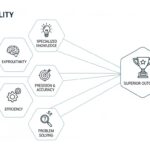Wendy Red Star was raised on the Apsáalooke (Crow) reservation in Montana. Red Star’s work is informed by her cultural heritage. Her work explores the intersection of Native American ideologies and colonialist structures, both in historical and in contemporary society. Wendy Red Star was chosen for this issue because her work speaks strongly about the ingrained cultural racism still affecting Native people and exposes these moments and atrocities for the digestion and responsibility of all Americans. Thank you for speaking with us Wendy.
I’ve spent a crazy amount of time focused on the news. Every morning I get up and read the news and see what’s going on. Even my daughter is very much aware. Her and her friends even talk about what’s going on in politics, which is interesting because she is just 9.
The day after the inauguration, I had to do a lecture at a college. I had a really hard time getting up that morning. What made me feel better was the fact that I am an artist and realizing how important the artist voice is. I was excited to be talking to young artists and encouraging them. So I’m actually very optimistic about who I am and the profession that I’m in. Being an artist is going to help for sure.
For part of my own personal work, I’ve been really invested in my own tribe’s history in relation to the U.S. government. I’m working on researching all the Crow tribe’s delegations to DC from 1873 forward. It’s really important for me to see how my own people have been shaped and affected by the government. I think seeing from that perspective is being enhanced by the political climate right now.
What do you think the impact and role of art and artists is during these highly charged political times? And how does that relate specifically to you and your work?
Even though I think it’s horrible what’s going on, it’s lit this fire. It’s so exciting to have all these protests here in the pacific northwest they’ve been really invigorating. I feel like as an artists we’ve always been doing a kind of one-person protest. To be in this community and to see this resistance all over the world is exciting.
Although it comes at the detriment of having someone like Trump in power. For me, as an artist who really focuses on identity and identity based work, it’s really very refreshing to be so relevant. When I was going to graduate school there was only a few of us who did identity based work and we always got a lot of shit for it. We were always told, “that was already done in the 90’s” and “race doesn’t matter” and those identity politics are over with. But we’re a p.c. Nation now.
With Trump, the sheets are off the bed and now you know. It isn’t over. All these issues were just covered up; all the bigots are out and they’re not afraid, and now that all the ugly is exposed, I think it’s an important time to get in there and work on these core issues.
I was looking at other artists who are doing political work and their work would have been read one way if Hillary had won and certainly would have continued to progress in that way, but now that Trump won, their work has this other meaning and it’s important. I see that in my own work too, the issues I’m talking about are now very relevant, whereas before they might have been kind of brushed under the rug, things like, native people feeling invisible- and I think there is so much more support for that now.
I feel like as artists we’ve always been doing a kind of one-person protest. To be in this community and to see this resistance all over the world is exciting.
A really great book that has given me a lot of great information is Diplomats in Buckskins by Dr. Herman J. Viola. That’s been a great resource because it talks about early on in the 1600’s and 1700’s how different native nations were taken to Europe, – France and England.In the new world, delegations were done to keep the peace but it was also done to show how great and powerful white society was, and this was definitely an intentional intimidation tactic.
A lot of the native people would take several months to get to Washington. Along the way they would get sick and occasionally very ill. Some of the chiefs even died. Once they got to Washington D.C they meet with the president. Most of those delegation trips were ways for the government to get land, reducing the land owned by native people.
The Chiefs would be given gifts from the president, guns, silver medals, etc. Once a chief returned to their territory the other tribal members would hold them in more esteem. So there is a very interesting history with some darker things and very human things.
One story that has fascinated me was the first delegation in 1873. In this photograph all the chiefs have peacock feather dusters. Rumor is that they were actually taken to a brothel and watched a burlesque show. They were so impressed by the dancer that they asked to meet her afterwards and she gifted them each a feather duster. In return they each gave her their eagle fans. So you see this picture with them and they’re all holding feather dusters.
So I just kind of wanted to unfold this history and follow it to my time. The plan is to actually take my own trip to Washington and take the project full circle.
You know as far as my community I can’t speak for all of them but I think a lot of oppressed people are usually liberal or democrat. Obama actually came and visited the reservation and he was adopted as a tribal member and given a name and everything.What really opened my eyes was a trip I took to Montana to visit my dad a couple months before the election. I live in Portland a liberal bubble and that plane to Montana was the first time I had been around people who were really into Trump and it was really disturbing.
Just going into the reservation brought up feelings of concern about how fragile our relationship has been with the Government and how many things were promised that fell through or were taken away. So I really do worry about this relationship with Trump in power. We’ve fought so hard to keep the land that we have. Originally in 1851 our chief told the government where our territory was and that was 38 million acres. But since then, after many trips to Washington our land has been reduced to 2.25 million acres. With such a huge loss of our land, I worry that our reservations will get taken away entirely.
Looking at your White squaw pieces I’m reading a lot of satire from them. It feels like you are poking fun of the uninformed way which much of western culture, or western media, has depicted Native Americans. In regards to this series, Do you think there is a history of hypocrisy or a double standard within using native American imagery? How do you think the context of art changes based on the race or perspective of the artist? What’s the difference of a corporation using an image of a Native American versus how you use an image of a Native American?I think it all comes down to capitalism. For Native people almost everything has been taken away. There has been all kinds of forced assimilation, the taking away of kids from their parents, boarding schools, the cutting off of hair, punishment for speaking their language or anything associated from their culture. In this weird messed up way corporations are using Native American images to sell products and to capitalize on the very thing they wanted to take away. This isn’t new and it’s been happening since white people came in contact with Native people.The word squaw is a derogatory term that referred to the private parts of women. Even Ulysses S. Grant called the Native American woman squaws in his writing and the term was used in the newspapers from that era. From researching this word I ended up finding this book series that was produced in the 80’s. There were about 24 books with the last ones made in the 90’s. It was shocking that these books were around with such blatant racism and sexism as recent as the 90’s. For me making this work was about taking back ownership of the word squaw, sort of like the word bitch. So I bought all of the books and scanned the covers of all of them. The only thing I changed was the main characters image. I kept everything else, all the subtext and everything. So none of that was mine, not the titles or anything. That’s all from the original book.That seems a lot less funny now.
Yeah, like there’s no way I could come up with all that stuff. I couldn’t believe that these were made so recently. I think Native people are the last race of people that there is still so much offensive imagery of us out there, things like the Washington redskins and the Queensland Indians still isn’t seen as a problem. So that’s the difference, me using it is not capitalizing on it but coming from a more human approach.
You know the issue of feminism has just come up for me recently, and I think it has a lot to do with living here in Portland. I’ve come up against that word a lot and for me Apsáalooke woman, is a different kind of feminism because it’s outside of that colonial structure that white feminism has been grown out of. I think for a lot of women of color it has been about carving out a space and coming up to bat for that. It’s a different kind of feminism due to race and class and although we can unite like in the women’s march, there’s always some kinds of backlash, like the 53 or 54% of women who voted for Trump for example.I do love feminism and I think it’s so important, especially in raising my own daughter. We were driving in the car and the radio announced that it was national men’s day and from the back seat I heard this cackling and I turn around and my 9 year old. She’s says” isn’t it men’s day like everyday, we sure are living in a Trump world now” and I though ‘wow your crazy, being able to grasp onto these concepts at your age.’I’m not anti-men or anything like that, but for me it’s important to show Apsáalooke feminism the way that I want to see it, and that may not always mesh with colonial feminism. So carving out that space for myself and for my daughter has been very important.I have a series called #apsáalookefeminist that involves our collaborative work. I’m moving forward with Beatrice, my daughter, to do a lot of performative work at museums, working with collections, and engaging with the public. I think we’re just going to call our collaborative process Apsáalooke feminist and just take that journey together. While I think our journey is important, I think if anything the work has to be flexible to include women from other cultures and more perspectives on what it mean to be a woman in those cultures.
When I was in undergrad I was setting up teepees on campus and one of the professors said that my work was very political. I didn’t even know what that meant at the time. I didn’t know that doing something outside of the colonial norm was considered political.
How have conversations in the political sphere changed the way your work is viewed? Do you see your work as more politicized now than the past, and if so, has it been intentional?
I haven’t done anything quite yet, but I’ve spoken at Cornish college a few weeks ago and it’s interesting being around all the young artists that really feel the need to do political work. When I was in undergrad I was setting up teepees on campus and one of the professors said that my work was very political. I didn’t even know what that meant at the time. I didn’t know that doing something outside of the colonial norm was considered political. Speaking with artists of color who are doing identity based artwork, they’re always told that there work is political, even if it’s not to them, just doing things that they’ve grown up doing and seeing, but since it’s outside of that colonial standard it gets labeled as political.
I have several openings coming up this summer and I think it will be interesting to see if people view my work differently. With the intense atmosphere that’s going on in our country I think people are going to be looking at my work with more of a political gaze even if I don’t do anything different.
Even though it sounds horrible, it’s been somewhat of a good time for artists because we’re pushed to think about these important things more. It does feel good to see some artists changing their work and doing political work even if they haven’t done it before. It’s something I appreciate and I like to see. As for myself, I think my work has always been outside of the colonial norm and I think I just need to keep doing what I’m doing because it hasn’t reached that privilege yet. I feel solidified that I just need to keep making the work and keep supporting other artists, their making, and exposure. That’s what I’m forging towards.










